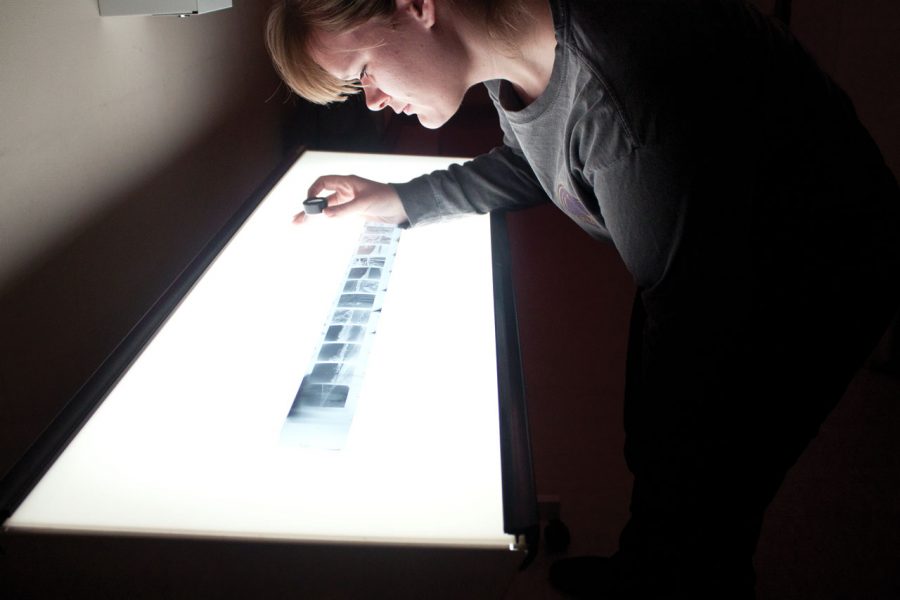Photo developing methods remain hot topic in photography field
February 9, 2012
The never-ending debate of film VS. digital photography has reappeared on the docket since Kodak, one of the largest film camera producers in the U.S., recently announced it will stop production on reloadable 35 mm film cameras in an attempt to bail out of bankruptcy.
The company will shift toward digital cameras and production of film cameras in emerging countries, such as China, India and those in Eastern Europe.
UNA’s photography curriculum has firm roots in film, ensuring all photography majors have a sure-footed knowledge of shooting with film cameras and being able to develop film from negatives.
“I am most comfortable with film,” said Jennifer Newton, a current photography major at UNA. “I like the flexibility I have with film compared with digital. It’s enjoyable to me and more hands on. I feel it is a labor of love with film.”
Some people find digital photography more user-friendly.
“I think digital has killed photography, in a sense, as an industry,” said John Phillips, a recent photography graduate of UNA. “Film photography is really a wonderful art form, but at this point it is almost obsolete for my current line of work.”
Philips currently works doing sports photography and finds using digital cameras easier.
Professor Wayne Sides does not prefer one to the other.
“With art, you choose your weapon,” he said. “To compare digital to film is like comparing acrylic paint to oil paint. You can get a similar result with both, but it depends on the intended outcome.”
He said he has noticed a trend of students raised on digital photography more interested in film.
“I like (film) because it slows people down,” Sides said. “It makes them think about their work as something precious and sacred. I want my students to know how they got that picture instead of just snapping and clicking with digital.”
He said film still has the upper hand when it comes to being able to produce larger-sized pictures. He also said it is much cheaper to use because digital cameras are constantly becoming obsolete as technology advances.
He said digital cameras produce fast results, making them ideal for commercial photography such as events, newspapers and anything where deadlines are fast.
While Kodak has stopped production in the U.S., the future of film is still unclear.
“Hollywood is using film to this day,” Sides said. “Is this how it is going to be in five years? We have no idea.”












